Tonsillitis in Babies: Symptoms, Causes And Diagnosis
Tonsillitis is an inflammation of the tonsil tissue due to the infection caused by bacteria and viruses. Check out the Symptoms, Causes, And Diagnosis.
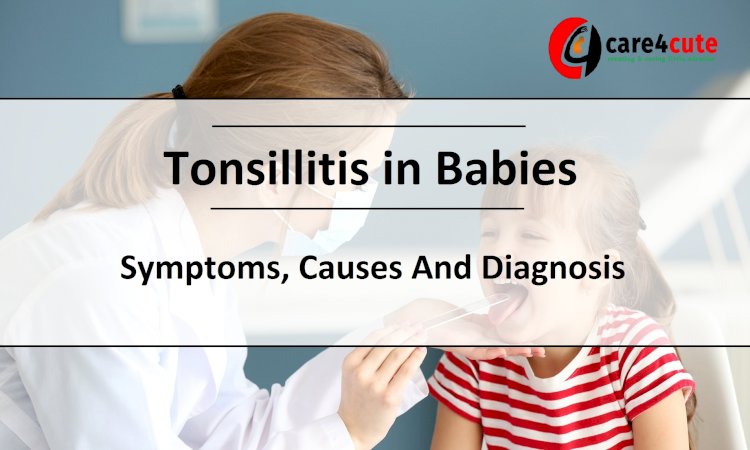
Tonsillitis is a swelling of the tonsil tissue due to the infection caused by bacteria and viruses, the type that also affects adults. It is a nosogenic situation and impacts swallowing. It barely occurs in children before the age of two years. But if it does, dealing with such a situation becomes challenging for the babies, especially because the condition might also be accompanied by lethargy in general.
Here, we will tell you about tonsillitis in babies, its signs, reasons and diagnosis.
What Is Tonsillitis In Babies?
Tonsils are a part of the lymphatic system and constitute the body’s first line of defense. They are present on the left and right dorsal side of the throat and look like two pink lumps at the back of the mouth. The tonsils protect the upper respiratory system from pathogens that enter the body through nasal or oral route. However, this makes them vulnerable to infections, leading to tonsillitis.
Causes of Tonsillitis In Babies
Various types of bacteria or viruses can invade the tonsils and lead to inflammation. Following are the common pathogens that affect tonsils:
1. Common cold virus: The common cold is the prominent cause of tonsillitis. A set of viruses, including influenza virus, adenovirus, coronavirus, rhinovirus, cause cold.
2. Group A streptococcus bacteria: 30% of tonsillitis cases are due to bacterial infection, with group A streptococcus bacteria being the principal cause.
3. Other bacteria: Some other bacteria which can cause tonsillitis are chlamydia pneumonia, streptococcus pneumonia, staphylococcus aureus, etc.
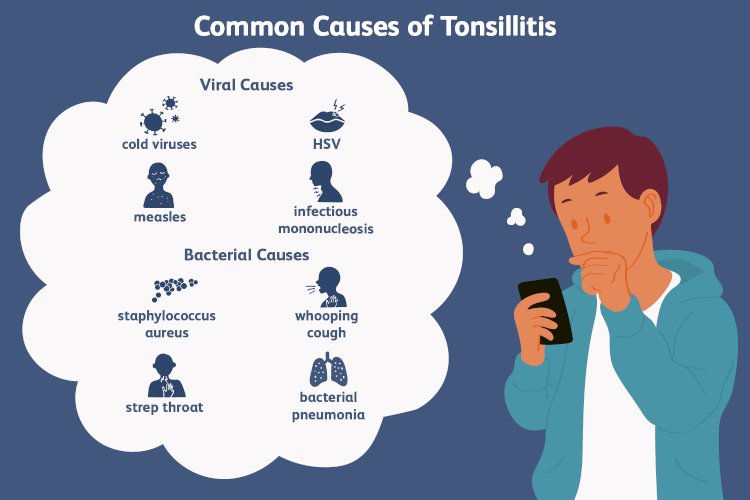
If your baby gets infected, some simple household measures could be followed to mitigate the symptoms.
Signs and Symptoms of Tonsillitis in Babies
Tonsillitis symptoms in babies are quite identical to those observed in adults. Here are some of the symptoms you might notice if your baby has a tonsil infection:
1. Redness in the throat: There is a distinct redness at the back of the baby’s throat, at the position of the tonsils. There could even be a yellowish or whitish layer atop the tonsils, indicating pus/aggregation of the white blood cells.
2. Pain while swallowing: Tonsils rub against the throat when we swallow. When your baby has tonsillitis, this activity can cause pain. Owing to this, babies averse to eat or drink anything.
3. Coughing: Since there is irritation in the throat, your baby may repeatedly cough, thus aggravating the pain.
4. Excessive drooling: Your baby may detest swallowing due to a throat infection. It leaves extra saliva in the mouth, and your baby might drool more than normal.
5. Earache: The pain from the tonsils can radiate to the ears, which makes the baby tug at them, especially when they are swallowing and coughing. The baby may appear fussy and even cry when they tug the ears.
6. Fever: The body detects the presence of a pathogen, thereby increasing the body temperature, noted as fever.
7. Bad breath: Bacterial activity in the throat creates compounds that emit a foul smell, resulting in bad breath.
8. Swollen lymph nodes: Tonsils are a part of the lymphatic system, and an infection can cause swelling of the lymph nodes around the neck and below the jaw.
9. Tonsillitis rash: It is also known as scarlet fever and can happen when the streptococcus group A bacteria is the cause of the infection. The bacteria release a toxin in the body, forming red rashes on the neck, back, abdomen, and face. The tongue develops small sores, which give it a strawberry-like appearance. In severe cases, the tongue may turn dark red with the presence of white patches.
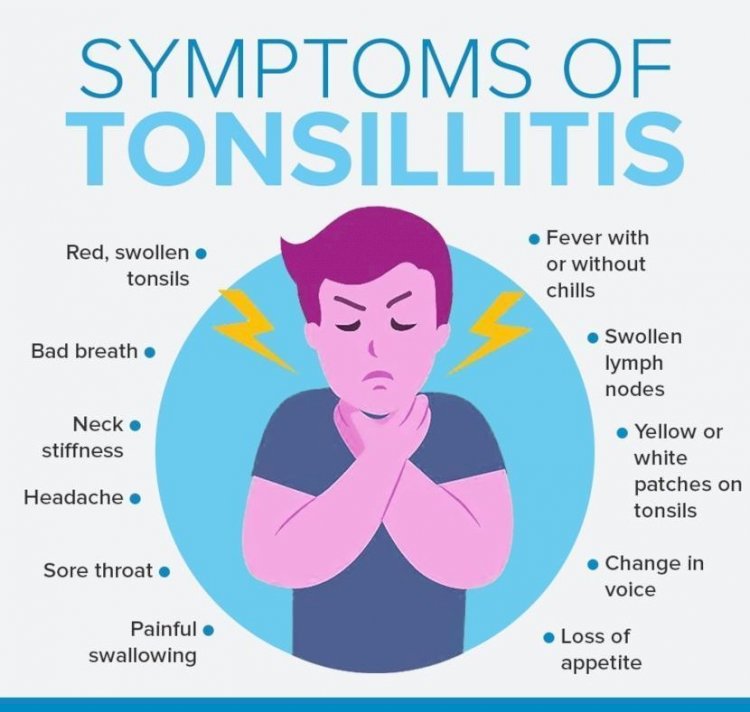
Tonsillitis can affect babies of all ages. If you observe any of the above symptoms, then visit a doctor to get your baby’s throat checked.
Tonsillitis Diagnosis
The doctor makes a conclusive treatment of the disease through the following steps of examination:
1. Visual checking of the throat: The infant’s throat is fully checked to detect all the signs and symptoms of tonsillitis. Most medical professionals draw conclusions based on this one examination.
2. Feeling for swollen tissue: Tonsils become inflamed when they get infected and may also cause an inflammation of the lymph nodes around the neck.
3. Checking the ears and nose: The pathogen may have found its way into the body through the nose or ears, causing a secondary infection in these areas. Also, the infection of the tonsils can enter the different parts of the ear, nose, and throat (ENT) network.
4. Laboratory testing of throat swab: A sterile medical swab is employed to sponge some fluid from the tonsils, which is then sent to the laboratory to identify the exact type of bacteria or virus that caused tonsillitis. It even helps differentiate it from conditions such as strep throat. The latter is caused by streptococcus bacteria, but a baby could develop swollen and infected tonsils from other types of bacteria and viruses as well.
5. Blood test: The doctor may prescribe a complete blood test. A heavy presence of lymphocytes, in combination with other symptoms, can conclude the presence of tonsillitis.
Once the cause is determined, the doctor may recommend medication or simply ask you to take care of the little one at home, depending on the intensity of the condition.
Diagnosis for Tonsillitis in Babies
Earlier, doctors would recommend the removal of adenoids and tonsils as a part of treatment for children. However, after medical advancements, there are alternative treatment options now.
The treatment for tonsillitis depends on the cause of the condition. Medicines could be administered to alleviate the pain and the severity of symptoms (cough, fever, etc.) so that the baby can feel better. Pain medicines such as acetaminophen or ibuprofen can be given to babies after consulting your doctor. If the infection is severe, tonsillectomy could be recommended, although it is considered as the last resort.
Tonsillectomy: It is the surgical removal of tonsils when the baby gets prone to repeated bouts of infection. It is the last resort when tonsillitis recurs in the baby for more than seven times in a year. It can intensely disrupt important activities such as feeding, breathing, or sleeping.
Post tonsillectomy, you need to take care of your baby at home.
Household Tips for Managing Tonsillitis and Tonsillectomy
Household remedies can improve the efficacy of the medication and help the baby recover faster after the tonsillectomy. Here is what you can do to make your baby feel better during tonsillitis:
1. More liquids: If the baby is younger than six months, then the baby is already on an exclusive liquid diet of breast milk. For babies older than six months, you can feed thin purees and soups. Fluids naturally flush the tonsils, keeping them moist and reducing the irritation. Do not give anything cold, hot, or too sweet since it can aggravate the tonsils.
2. Plenty of rest: Rest is necessary to ensure a speedy recovery from tonsillitis. It helps soothe irritation and subside the severity of the fever.
3. Install a humidifier (optional): A humidifier destroys water vapor into the surroundings. Babies with tonsillitis can be sensitive to dry air since it has an abrasive effect on the sore tonsils. Moderate levels of humidity facilitate relief from tonsil pain. If it is not possible to install a humidifier, then just keep the baby away from reach of dry air.
If the swelling of the tonsils has resulted in tonsillectomy, you can adopt the following methods to care for the baby once they return home:
- The doctor will prescribe a list of antibiotics as part of post-operative care. Strictly follow the prescription since these medicines play a crucial role in preventing infection at the time of surgery.
- If your baby can eat solid food, then the doctor will suggest certain dos and don’ts for feeding. Adhere to the diet plan to avoid discomfort and infection.
- Pain after surgery peaks at about five to six days after the operation. If the baby appears to find it unbearable and the current medication is not helping, then visit a doctor for consultation.
- It will take almost fifteen-twenty days for the grazed tonsil site to heal. Within this time, the baby may sometimes have blood-stained saliva. It is normal, but if there is too much blood in the saliva or the bleeding continues even after the recovery period, then you must get the infant checked by the doctor.
Tonsillectomy can be painful, but in the case of repeated tonsillitis, it is the best way to keep your little one safe from severely aggravated tonsils. The infant should recover within two weeks after diagnosis, and that also brings an end to other miseries like fever, drooling, and chronic cough.
Do not use any home remedies for tonsillitis in babies. Follow the diagnosis as prescribed by your doctor. Once your baby is recovered, follow the precautionary steps to avoid reoccurrence.
How to Prevent Tonsillitis?
Follow these easy and simple precautions every day:
1. Clean Surroundings :
Bacteria is found in household dust, it may lead to an infected tonsil in a little one. Keep the air and surroundings clean. Avoid taking the baby outdoors on extremely windy days, when there is a high probability of inhaling contaminated dust particles. Wash the baby’s toys, bottles, and utensils to prevent infection from the oral route.
2. Regular Bath:
Bathing washes away the bacteria present on the body, thus reducing the chances of the infant catching an infection when they put the hands in the mouth.
3. Keep the baby away from those with throat infections:
Never allow anyone with a sore throat or cold to get close to or hold the baby. Most upper respiratory infections transmit from one person to another through the air. Even if the infected person coughs faintly, the baby could end up with full-blown tonsillitis. If you are infected, wear a mask when around the baby and wash hands with a disinfectant soap before handling them or their personal items. Avoid kissing or cuddling the baby until your throat infection is cured.
What are the complications of tonsillitis?
When left untreated for an long period or ignored despite being chronic, tonsillitis can lead to the following divarications:
1. Adenoid infection:
Adenoid is part of the lymphatic tissue, just like tonsils, and is situated at the back of the nasal cavity. Severe infection of tonsils can infect the adenoid, causing it to swell just like tonsils, resulting in obstructive sleep apnea. In such cases, the adenoids will have to be surgically removed along with the tonsils.
2. Obstructive sleep apnea:
Swollen tonsils due to tonsillitis can hinder the windpipe, making it difficult for the baby to breathe. This could, ultimately, lead to a complicated condition like sleep apnea.
3. Peritonsillar abscess:
When the infection spreads from the tonsils to the surrounding tissue, it leads to the formation of a pus-filled pocket that will appear whitish externally. This is called a peritonsillar abscess. If the infection subsequently spreads to the gums, then it may cause problems during teething.
4. Otitis media:
A pathogen can quickly enter the ear from the throat through the eustachian tube. Here it can harm the eardrum (tympanic membrane) and the middle ear, which may lead to a whole new bunch of problems.
5. Rheumatic fever:
If tonsillitis caused by group a streptococcus bacteria is left untreated for a very long time, then it may cause rheumatic fever, which is a severe inflammation of different organs of the body.
6. Poststreptococcal glomerulonephritis:
Streptococcus bacteria can find their way to various internal organs of the body. If it enters the kidneys, then it causes post-streptococcal glomerulonephritis. Here the blood vessels in the kidney inflame, thus making the organ inefficient in filtering blood and forming urine.
As complications of tonsillitis could be distressing for babies, it is wise to take prompt measures to avoid them. The following are some questions that are useful.
Frequently Asked Questions
1. How long does the infection last?
The duration of the infection will depend on different factors, such as its intensity, the nature of the pathogen, the time of diagnosis, and the general health of the baby. An average-case of tonsillitis usually recovers within three to four days but sometimes it can persist up to two weeks.
2. Is tonsillitis contagious in babies?
Tonsillitis are contagious. Coughing and sneezing, when affected by tonsillitis, can pass germs from an infected baby to other babies.
Tonsillitis can be dangerous, but luckily, there are easy ways to prevent the baby from catching an infection of the tonsils. Some basic hygiene and care can go a long way in preventing tonsillitis in babies. As the condition is contagious, stay careful that it does not spread to other kids in the house, to avoid double trouble.
If you have any experience to share... Please share it with us in the comments section below.



































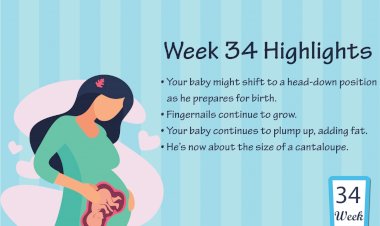



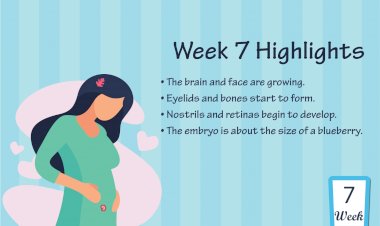
Comments (0)